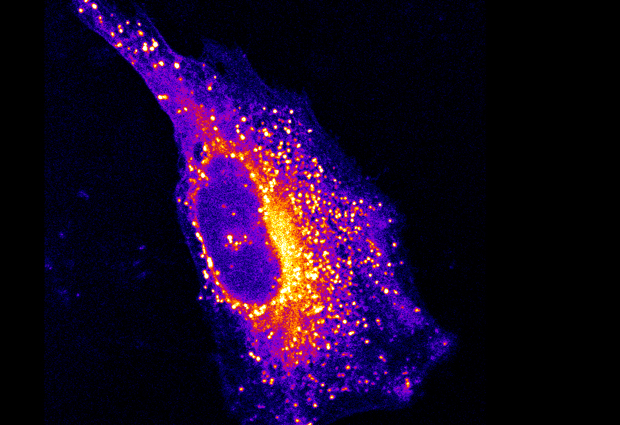
Read the latest Issue
A new technique developed at EMBL reveals the way fats interact with other molecules in cells

We know much less about the way fat molecules – or lipids – behave in cells than we do about other molecules like proteins. A new chemical biology technique developed at EMBL and reported in the journal PNAS may be about to change that, as study author Carsten Schultz explains.
We took lipid molecules and made three small modifications. First, we added a chemical group called a caging group that prevents the lipid from interacting with other molecules. The bond between this group and the lipid can be broken using a flash of light, allowing us to ‘uncage’ the lipid at a precise moment and leave it free to interact. Second, we added a chemical group that becomes extremely reactive when exposed to light of a certain wavelength. Another, higher energy, flash of light was used to activate this group, causing it to react with the nearest molecule – in this case attaching the lipid to whatever protein it was interacting with. Third, we added a chemical group that made the lipid easier to study, allowing us to either extract the lipid and its attached protein for analysis, or add a fluorescent group to reveal its position in the cell. With these modifications, we could identify which proteins a lipid was interacting with at a given point in time.
Our technique makes it possible to study lipids in a whole living cell on timescales of only a few seconds. This has not been done before, and is crucial because most lipids in a cell have very short lifetimes. We can also study the way lipids are transported and broken down within the cell. In principle the same technique could be used to study many types of small molecules in cells, including pharmaceuticals, so there’s great potential for further research and beneficial applications.
Looking for past print editions of EMBLetc.? Browse our archive, going back 20 years.
EMBLetc. archive